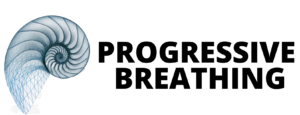The Detriments of Chronic Mouth Breathing: Contribution to Anxiety, Panic Attacks, and Stress
Chronic mouth breathing has a profound impact on the body and mind, particularly in the way it contributes to heightened levels of anxiety, panic attacks, and stress. Although it may seem like a simple respiratory habit, mouth breathing can disrupt the body’s natural balance and trigger a cascade of physiological responses that exacerbate mental health issues. Understanding the connection between mouth breathing and the stress response is key to combating these problems, with nasal breathing offering a powerful and natural antidote.
The Connection Between Mouth Breathing and Stress Response
The body’s autonomic nervous system (ANS) controls involuntary processes like breathing, heart rate, and the stress response. The ANS is divided into two main branches: the sympathetic nervous system (SNS), which activates the body’s “fight-or-flight” response, and the parasympathetic nervous system (PNS), which promotes relaxation and recovery, or the “rest-and-digest” state.
When we face stressful situations, the body instinctively shifts into fight-or-flight mode, causing rapid, shallow breathing through the mouth. This is a survival mechanism designed to prepare the body to respond to perceived threats by increasing heart rate and oxygen delivery to the muscles. In short bursts, this reaction is beneficial; however, when it becomes a chronic pattern due to habitual mouth breathing, it can result in elevated stress levels and anxiety.
Mouth breathing typically results in shallow, rapid breathing that over-activates the sympathetic nervous system. This continual activation of the SNS leads to a chronic state of hyperarousal, where the body is constantly on high alert, even when no real danger is present. This is where the problems arise: when the body is stuck in this state for too long, it can lead to chronic anxiety, heightened emotional sensitivity, and an increased risk of panic attacks.
How Mouth Breathing Affects Anxiety and Panic Attacks
Chronic mouth breathing reduces the efficiency of oxygen exchange, which leads to low levels of carbon dioxide (CO2) in the blood, a condition known as hypocapnia. CO2 is crucial for maintaining the pH balance in the blood and ensuring proper oxygen delivery to tissues, including the brain. Low CO2 levels can cause symptoms like dizziness, lightheadedness, and a feeling of suffocation — all sensations commonly associated with panic attacks.
When these physical symptoms of oxygen imbalance occur, they can trigger or worsen panic attacks. For people with pre-existing anxiety, chronic mouth breathing creates a vicious cycle: the breathing pattern itself increases anxiety, and the anxiety, in turn, reinforces dysfunctional breathing.
The Physical Impact of Chronic Mouth Breathing on Stress
In addition to worsening anxiety, mouth breathing has several physical effects that contribute to ongoing stress. It causes the muscles of the upper chest and neck to overwork, leading to tension and discomfort. This contributes to a feeling of physical strain that reinforces mental stress. Over time, chronic stress from mouth breathing can affect sleep quality, digestion, and even immune function, all of which worsen overall well-being.
Nasal Breathing: A Natural Remedy for Stress and Anxiety
Unlike mouth breathing, nasal breathing helps activate the parasympathetic nervous system. By breathing through the nose, the body takes in air more slowly and deeply, encouraging diaphragmatic breathing, which naturally promotes relaxation. This shift away from shallow chest breathing to deeper belly breathing calms the nervous system, reducing the production of stress hormones like cortisol and adrenaline.
Nasal breathing also increases the production of nitric oxide, a molecule that helps to relax blood vessels, improving blood flow and oxygen delivery throughout the body. This promotes a sense of calm and reduces cardiovascular strain, which can help lower anxiety and prevent panic attacks.
Additionally, nasal breathing ensures a more balanced exchange of oxygen and carbon dioxide. By allowing CO2 levels to remain stable, nasal breathing prevents the onset of hypocapnia and its related symptoms, which play a key role in the triggering of panic attacks.
Breaking the Cycle with Nasal Breathing
To combat the effects of chronic mouth breathing, practicing conscious nasal breathing can be a transformative step in managing anxiety and stress. Simple techniques like box breathing (where you inhale through the nose, hold, exhale, and hold again for equal counts) can quickly reduce stress levels. Over time, training the body to habitually breathe through the nose can reset the nervous system, creating a foundation for lasting emotional and physical health.
Summary
Chronic mouth breathing contributes significantly to anxiety, panic attacks, and stress by over-activating the body’s fight-or-flight response and disrupting oxygen balance. However, nasal breathing offers a powerful way to reverse these effects, promoting relaxation, mental clarity, and a healthier stress response. By making the switch to nasal breathing, individuals can restore balance in the body and mind, laying the groundwork for optimal health.
Find 3 Free Nasal Breathing Practices to alleviate stress.



